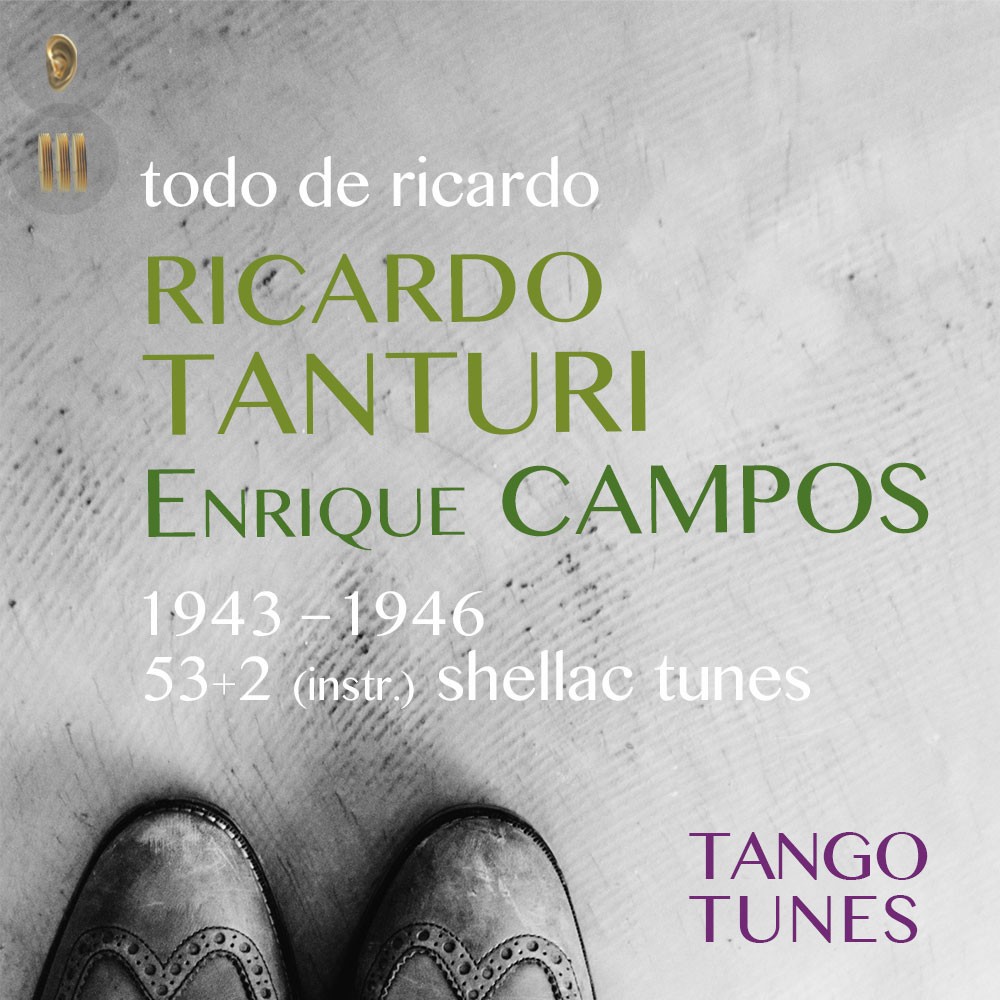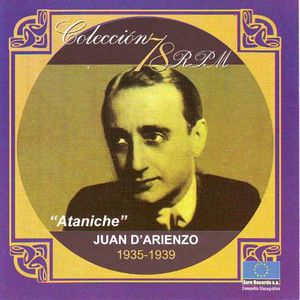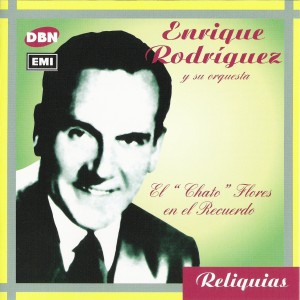EL 13 DATABASE
Introduction
The database (DB) of any DJ is its fundamental tool:
– Its diversity and importance allow him to propose a wider range of music,
– The quality of its sources allows it to propose for each theme, their best version (even if this term is debatable, we know it well!).
From the beginning of our existence, we decided to allocate an important part of our budget to the purchase of albums by trying to obtain the best sources.
Over time, we have patiently acquired and also exchanged albums, giving priority to the following collections
CTA (Club Tango Argentino), BATC (Buenos Aires Tango Club), ARCHIVO RCA, ARCHIVO ODEON, ARCHIVO COLUMBIA, RELIQUIAS, RPM78, CLUB DE TANGO plus all those which at the time constituted the essential of the discography TANGO ARGENTINO, EL BANDONEON, ALTAYA, HARLEQUIN, GRANDES DEL TANGO
Nowadays, there are online purchase services such as TANGO TUNES or TANGO TIME TRAVEL, often with high quality sound renditions
THE DATABASE
STRUCTURE
From the outset we have chosen to arrange the titles by album and orchestra.
The DB is therefore a root folder with subfolders named after the orchestra.
Here is the beginning :
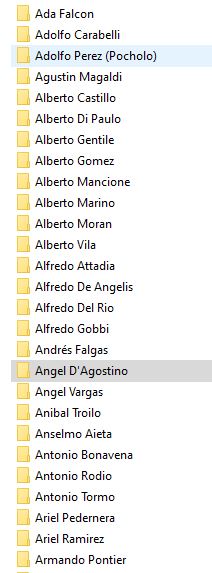
Each of these sub-folders contains album names.
Each of these folders, in turn, contains the album titles.
To make it easier to find your way around we have adopted the nomenclature :
NAME OF THE COLLECTION – Name of the Orchestra – Name of the album.
Thus, by alphabetical order, the collections appear together.
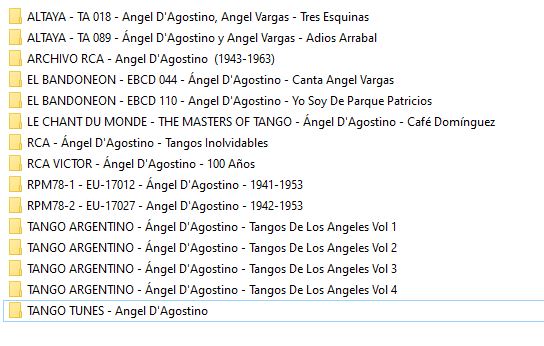
Finally, each folder contains all the tracks of the album.
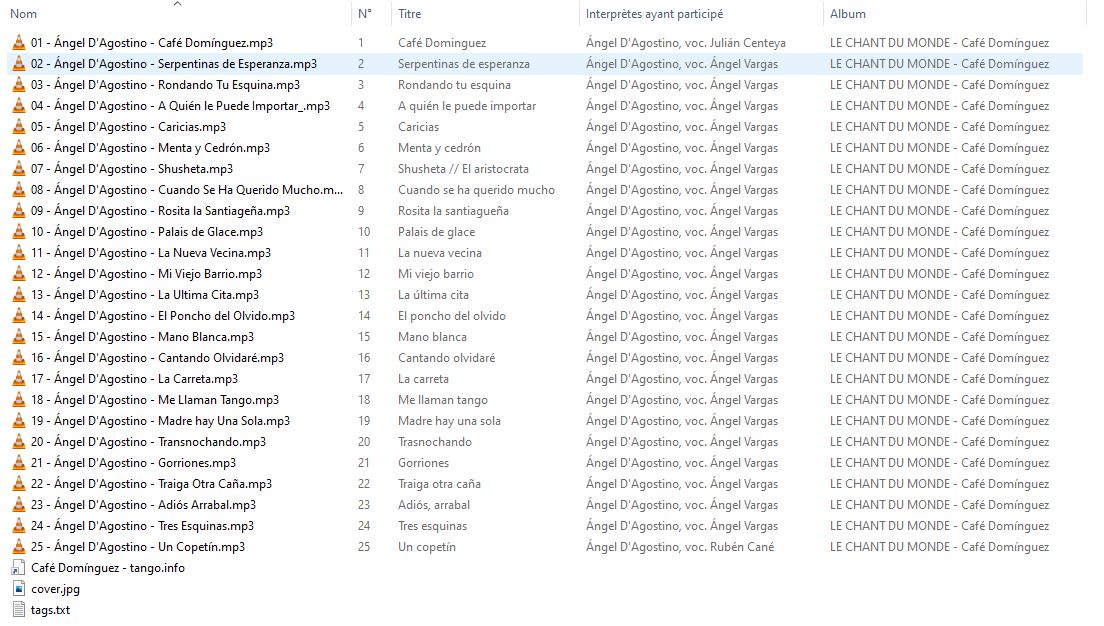
In reality, the organisation of the tracks in the database is not important, it just makes it easier to find your way around.
Indeed, it is your DJing software which, in the end, will organise all the themes of the BDD and allow them to be used.
To do this, each track must be fully tagged.
ETIQUETTAGE
To be able to use such a database, each title of each album must be filled in with the essential information for the DJ, namely
– The genre (tango, waltz, milonga or other)
– The name of the orchestra (for example Rodolfo Biagi).
This name must be consistent for the whole DB ie. it must be the same for all the titles of the Rodolfo Biagi orchestra. This is a real problem because even on sites such as Spotify sometimes it is Rodolfo Biagi, sometimes Typical Rodolfo Biagi Orchestra, Rodolfo Biagi and his Orchestra etc…
– The title of the song (e.g. Scars)
– The singer (e.g. Andrés Falgás) or if no singer (instrumental title)
– The date of recording of the piece (e.g. 27/03/1940)
We prefer the date to the exact day. It is not obligatory, but the year is. However, this allows us to identify pieces recorded very close to each other, or even on the same day, and which therefore have a great stylistic consistency. The year is essential because many orchestras have recorded the same themes on very different dates, sometimes with a gap of 20 or 30 years.
– The name of the collection
This allows us to estimate the quality of the source, which is essential. Some collections are known to be good (Tango Tunes, CTA etc …), others rather mediocre (EL BANDONEON, TANGO ARGENTINO), In our case, the collection appears in the name of the album which is of the form NAME OF THE COLLECTION – Name of the album.
Other information is less important because it can be deduced automatically by your DJing software
– Bitrate (from FLAC or WAV or AIFF lossless to 128 Kbps)
– BPM (can be used to harmonise a tanda)
– Duration
FORMAT
We decided to use the format inspired by the website : https://tango.info.
This site allows you to download all the album information contained in its database and to tag an entire album in a single pass.
(Ici notre tuto).
In addition to the quality of the information, the titles and all the authors are perfectly accentuated, the dates are accurate to the day and the number of albums listed is very substantial and continues to grow.
COLLECTIONS
By collection, we mean a series of albums published by a label, for example RELIQUIAS or RPM78
The quality of this collection is first rate, we particularly recommend the D'Arienzo and Fresedo, but in general the rendition is not far from the best currently available. Furthermore, the titles are perfectly labelled, which makes them immediately usable.
The quality is also there. The catalogue is very extensive. The restitutions are good in general, even if the choice to preserve the noise of the recording can sometimes destabilize. On the other hand, for those who master the denoising techniques, the TANGO TUNES titles are an ideal base material.
EURO RECORDS – Colección 78rpm
The 78 rpm Collection is a collection released in 3 issues. The first in 2004, the second in 2005 and the last in 2009.
For a complete list of the albums in the collection and their contents :
La collection 78 rpm 1 sur le site tango.info
La collection 78 rpm 2 sur le site tango.info
La collection sur le site de Michael Lavocah
This collection has long been considered a must for DJs. The sound is of high quality, the noise is often very well suppressed, a sound engineer's job is done on the tracks to balance them spectrally. Often the tracks have more bass. Even today, the renditions rival the best recordings.
DBN – RELIQUIas
This collection, published between 1996 and 2004 by the Argentine label DBN, often renders tracks from the Odeón label very correctly.
It is still a must for DJs, some of the Pugliese or Canaro albums are really excellent. The filtering is very subtle. The collection is very eclectic, ranging from Gardel to Folklore to Jazz !



